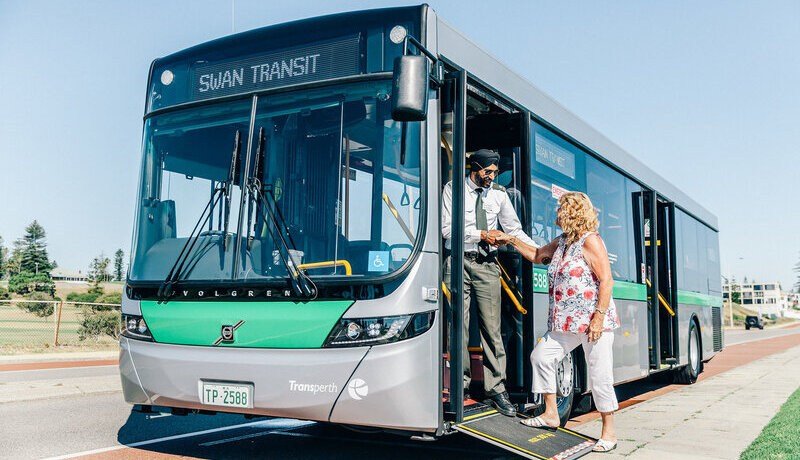A Day in the Life of the Mobile Workforce: Part 1
Almost overnight, the Covid pandemic made real what pundits had been predicting for years: the rise of the mobile workforce. In every country – in every industry – working-from-home (at least some of the time) has become the rule rather than the exception. creating a fundamental shift in the way we work – and many, many new challenges. The new paradigm requires new schools of thought governing how to train, motivate, communicate, and enable productivity among mobile employees, all while keeping company data and the employees themselves safe during working hours and beyond.
The term “mobile worker” often conjures images of graphic designers in coffee shops and pajama-clad CEOs in home offices, but the mobile workforce also includes those sets of workers who have always been mobile – and who became civilization’s lifeline during the early days of the pandemic – such as delivery drivers, technicians, plumbers, and other traveling service professionals. For the delivery and logistics industry, the mass adoption of services like Amazon Prime and Amazon Now, food and personal assistant delivery services, and the need to send and track packages to your friend halfway across the world at any given time, has forced courier companies to rethink their business models and logistical operations.
To get a sense of why connectivity and enablement are so important, let’s look at the day-to-day lives of three mobile employees of a fictional manufacturer of energy-efficient appliances called EnerT, starting with a typical morning for delivery driver John.
A typical morning for a mobile worker
EnerT equips its delivery drivers with a ruggedized mobile device preloaded with customized apps to get the job done. Every morning when John arrives at EnerT’s central depot, he opens his mobile app to get the day’s assignments and plans his route. Today, he needs to deliver appliances to 25 retailers by 1 p.m. in order to make a company-wide meeting at 1:30 p.m., and must get on the road no later than 6 a.m. per company regulations.
Unfortunately for delivery drivers like John, routes set by upper management often don’t leave ample time for bathroom or rest breaks, not to mention uncontrollable factors like traffic jams, flat tires, or accidents. Many times in the past, John has felt rushed to finish his route on time, causing him to speed or make other reckless driving decisions. Not only is this worrisome for John’s personal health and safety, it also takes a toll on the company. Even if John manages to avoid getting into an accident or being issued a ticket, the act of speeding causes his fuel consumption to increase and causes unnecessary wear and tear on the company truck.
EnerT recently partnered with GreenRoad to leverage its smart mobility platform to integrate safety coaching and tracking features into their proprietary logistics, map, and task-assignment app. Not only does the mobile app alert drivers when they are making risky driving maneuvers and coach them into performing more safely, it also saves John time by using GPS location services to automatically update the depot when he has reached each delivery destination. John checks his assignments for the day, logs in to his device and hits the road to make his first delivery.
Smart mobility technology helps mobile workers navigate life’s curveballs
John is well into making his rounds at 8 a.m. when he receives an alert on his mobile app. One of his colleagues made an erroneous drop off, and John’s manager used GreenRoad’s live fleet tracking component to see that John was closer than any other driver in the area. The alert’s message requests John swing by and pick up the wrongly delivered appliances before returning to his route, and he accepts the task with the quick press of a button on his smartphone.
By 11:30 a.m., John is already running a bit behind when the map component of his mobile app alerts him to a wreck ahead and offers him a route that is longer distance-wise, but ultimately faster to reach his next stop. A few months ago, John would have been worried about the risk of a longer route, but knows he will be able to review his route in GreenRoad Central with his manager at the end of the week and explain his decision.
At 1 p.m., John’s calendar reminder for the company meeting goes off, and he returns to the depot, though there are two retailers on his list he was not able to reach. He hands these orders off to the next driver. Though he did not finish his route, he received safe driving scores throughout the day, and feels confident his manager will take this into account during his weekly review, along with the other unforeseeable delays. Additionally, his fleet manager will be able to review accumulated driver data over time and have tangible evidence to present to the company’s CEO that they should hire more drivers to maintain safety and efficiency, reducing the pressure of meeting impossible expectations for drivers like John.
It’s about more than safety and efficiency
It can be difficult to integrate a new smart mobility system into a long-standing business model, but when done successfully, the benefits are undeniable for each level of employee in an organization. Employees are safer and more efficient, managers can set better routes and goals, and C-suite leaders can get up to speed on how the company is doing on their own time through easy-to-read data sets. And keep in mind that if your company isn’t providing these types of tools, your competitor may be or likely already is.
In our next post for this series, we’ll see how a day in the life of the business development director at EnerT is shaped by today’s mobile workforce technology.





